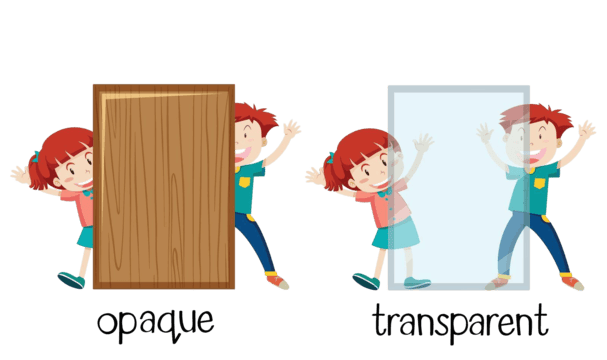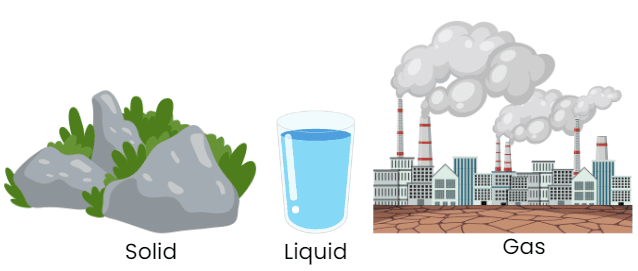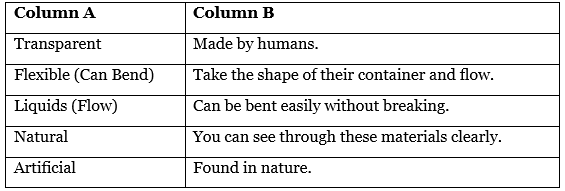Worksheet Solutions: The World of Things | Worksheets with solutions for Class 3 PDF Download
| Table of contents |

|
| Fill in the Blanks |

|
| True or False |

|
| One - Word Answer Type Questions |

|
| Multiple Choice Questions (MCQs) |

|
| Match the Following |

|
Fill in the Blanks
Q1: Material that you can see through clearly is called __________.
Ans: Transparent
Q2: Materials that do not bend easily are known as __________.
Ans: Rigid
Q3: Materials that take the shape of their container and flow are called __________.
Ans: Liquids
Q4: Materials found in nature are classified as __________.
Ans: Natural
Q5: __________ materials spread out and fill the space they are in.
Ans: Gases

True or False
Q1: Glass windows are an example of opaque materials.
Ans: False
Q2: Wood is a flexible material.
Ans: False
Q3: Liquids keep their shape.
Ans: False
Q4: Rocks are artificial materials.
Ans: False
Q5: Artificial materials are made by humans.
Ans: True 
One - Word Answer Type Questions
Q1. Can you see through glass?
Ans: Yes
Q2. What do we call things that are made by people?
Ans: Artificial.
Q3: What do you call things that come from nature?
Ans: Natural things
Q4:What is a metal spoon made of?
Ans: Metal
Q5: What do we call materials we cannot see through?
Ans: Opaque

Multiple Choice Questions (MCQs)
Q1: Which material can be bent easily without breaking?
(a) Fabric
(b) Metal
(c) Glass
(d) Wood
Ans: (a) Fabric
Q2: Which type of material spreads out and fills the space they are in?
(a) Liquids
(b) Gases
(c) Solids
(d) Metals
Ans: (b)Gases
Q3: What is an example of a translucent material?
(a) Wood
(b) Frosted glass
(c) Metal
(d) Rubber
Ans: (b) Frosted glass
Q4: Which type of material is hard and does not bend easily?
(a) Fabric
(b) Rubber
(c) Metal
(d) Water
Ans: (c) Metal
Q5: What do liquids do?
(a) Keep their shape
(b) Flow and take the shape of their container
(c) Spread out and fill the space they are in
(d) Do not flow
Ans: (b) Flow and take the shape of their container

Match the Following

Ans:
Transparent - You can see through these materials clearly.
Flexible - Can be bent easily without breaking.
Liquids - Take the shape of their container and flow.
Natural - Found in nature.
Artificial - Made by humans
FAQs on Worksheet Solutions: The World of Things - Worksheets with solutions for Class 3
| 1. What are the different types of things we encounter in our daily lives? |  |
| 2. How can we categorize objects based on their uses? |  |
| 3. Why is it important to understand the world of things around us? |  |
| 4. What is the significance of distinguishing between natural and man-made things? |  |
| 5. How can we identify objects in our surroundings? |  |















